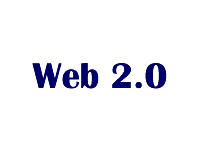The term Web 2.0 has been on the tip of everyone’s tongue for a few years now, but there is still a lot of confusion about what it actually means.
The O’Reilly Media Web 2.0 conference in 2004 was the first notable use of the term, where Tim O’Reilly described it as:
Web 2.0 is the business revolution in the computer industry caused by the move to the Internet as platform, and an attempt to understand the rules for success on that new platform.
While I truly believe in the Internet as a platform (just look at how Google are dominating the online applications market), the rules for success are rather blurred.
Web 2.0 is a Mentality
My personal opinion on Web 2.0 is that it is a mentality. It’s opening yourself up to your partners, customers, and the public. It’s having a two way communication with your visitors. And most importantly, it’s about embracing what the internet can do for us.
Us is the key word, the internet is open. There’s no me, and you’re not on your own. Social networking is the obvious example of this, but it extends further. Online applications allow for collaboration, RSS feeds deliver the latest news about people and businesses to one place, even static websites are talking to us.
The internet has become frighteningly personal, and we need to take advantage of that. Post on forums and blogs, say hello to your website visitors, incorporate collaboration and social features into your applications.
Web 2.0 as a Design Trend
There’s also the Web 2.0 design trend, something that many people are getting very wrong.
Some of the main characteristics of this design revolution are reflective surfaces, star shaped badges, retro stripes and over sized buttons. It’s not that I have anything against these, it’s just that they’re wrongly being labeled as Web 2.0.
Web 2.0 from a design perspective is all about delivering your content in a simple and concise manner. Content is definately king, but that doesn’t mean you have to cram as much of it onto a page as possible. White space gives your content room to breath and the use of larger font sizes makes the reader feel that you’re talking directly to them. Subtle hues are great to splash some colour onto your site without taking away any focus, while vibrant colour is reserved for your main call to actions.
So, what is Web 2.0?
I admit that I havn’t stated exactly what Web 2.0 is, or what it’s rules are. I don’t think that it can be truly explained, you have to “get” it.
This was more about me stating what Web 2.0 means to me, and where people may be going wrong. A common misconception is that Web 2.0 is the new internet. AJAX has been around for years, it just wasn’t being used as it is today. Magazines and newspapers have understood the importance of white space for decades. Instant messaging, emails and internet forums were around long before MySpace and Facebook.
Embrace the internet, use it to your advantage. Web 2.0 may be a new way of thinking, but it doesn’t use anything that hasn’t always been available to us.
Be creative, and let Web 2.0 work for you.
If you have any comments or questions about Web 2.0, please feel free to leave us a comment!

